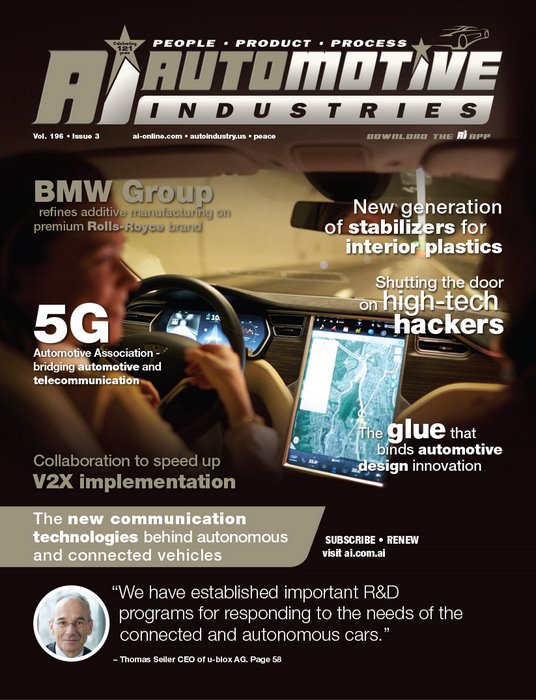
According to Swiss firm u-blox 23.2 million new vehicles with security technology for connectivity will be shipped by 2020, and 400 million adaptive cruise control systems will be supplied cumulatively by 2025.
One of the drivers of this market growth will be that, from the start of 2018, eCall will be a mandatory feature for each new car sold in the European Union. According to u-blox simply combining an LTE Cat 4 smart modem (e.g. TOBY-L2) with an automotive dead reckoning positioning module like the company’s NEO-M8L yields a fully functional telematics/eCall system. It makes use of GNSS tunneling, which is included on all cellular u-blox modules. The same system also enables the Russian ERA-GLONASS emergency response system and can be used for other core services, such as stolen vehicle recovery and remote diagnostics.
Automotive Industries (AI) asked Thomas Seiler, CEO of u-blox, about the company’s automotive vision and strategy.
Seiler: u-blox has been supplying the automotive industry for more than 15 years. Our automotive
focus is on vehicle-to-vehicle and vehicle-to-infrastructure products – jointly referred to as V2X. The challenges of V2X include accuracy of car position and security. In addition the detection of pedestrians and cyclists must still be refined.
We have established important R&D programs for responding to the needs of the connected and autonomous cars. The underlying communication technology enabling V2X is based on IEEE 802.11p, which defines enhancements to traditional Wi-Fi, optimizing for low latency, non-line of sight and long distance connectivity. THEO-P1 was the first u-blox product serving V2X requirements. It is an automotive grade V2X transceiver module for infrastructure and vehicles compliant to WAVE and ETSI ITS G5 for operation in the USA and Europe. The single channel
802.11p diversity and dual concurrent channel operation work over ranges of more than 1 km.
AI: What automotive product launches can we expect in 2017-18?
Seiler: u-blox has four positioning product lines designed for standard precision (meter level accuracy), high precision (centimeter to decimeter accuracy), dead reckoning (coverage in tunnels and urban canyons), and timing and frequency requirements. For the cellular sector, u-blox offers an extensive range of modules covering all major standards: GSM; UMTS; CDMA; high speed & low speed LTE; NB-IoT and RPMA. The third product portfolio is short range radio technology, covering multiradio, Bluetooth, Wi-Fi and V2X modules.
We believe that DSRC V2X will start ramping up aggressively over the next coming years and we are lining up a wide breadth of solutions to address different deployment configurations, which will reduce time-to-market and risks for the Tier 1s and OEMs. In addition, we will be introducing a new generation of multiradio solutions both for the IVI and Telematics Units, where we see new technologies such as Bluetooth 5 and 802.11ax enabling a new set of use cases. We will also introduce a new and powerful generation of high speed LTE modules for the automotive market that supports the high bandwidth requirements of new connected car applications.
AI asked Costas Meimetis, Director Product Strategy, Short Range Radio, u-blox, how the 5G revolution impacted automotive V2X technologies.
Meimetis: u-blox has a comprehensive, cellular automotive grade portfolio and we are working closely with Tier 1s and OEMs to meet their requirements for 5G. We will continue to provide our customers with GNSS modules and chips that work seamlessly with our cellular portfolio.
However, we have to note that V2X market demand already exists, and the proven Dedicated Short Range Communications (DSRC) 802.11p technology is well positioned to address this requirement. The United States took a very promising step with the Notification of Proposed Rule Making (NPRM) for mandating DSRC in new vehicles from 2020 onwards.
What will happen when 5G becomes mainstream remains to be seen. It could be that both 5G and DSRC technologies co-exist either for redundancy or complementarity. History shows that early movers which are able to capture a significant market share are difficult to be displaced, and on that basis DSRC seems to have a clear advantage.
Franck Berny, Senior Principal, Automotive Market Development, u-blox.
I would like to make a few comments to make sure there is no misunderstanding regarding the cellular connectivity requirements of Autonomous Driving (AD). As far as AD in general is concerned, 5G is not a prerequisite. Good quality maps will be part of the system, so having 5G would enable faster updates of the HD maps.
But, as our customers have identified, the critical AD Software will have to run inside the car (not in the cloud), so there is no need for fast communications for autonomous driving. The high- precision GNSS receiver – for Augmented Reality, V2X or AD – requires access to a continuous flow of correction data in order to be able to provide the requisite accuracy.
This information can be received from the Internet via cellular or via a Geostationary satellite, whichever is available. The required data rate is very low, so there is no need for high bandwidth when the cellular port is used.
AI: How has it helped that u-blox automotive grade products are designed for multiradio standards and compatible with Wi-Fi, Bluetooth and NFC?
Meimetis: We see a clear trend for multiradio integration in the automotive business, driven by use-cases where for example you want to achieve screen-mirroring (Apple CarPlay, Android Auto) and at the same time enable Bluetooth audio transmission, which is a very common scenario for new generation In-Vehicle-Infotainment (IVI) units. In addition, for the outbound connectivity of the vehicles (Telematics), a car will need to connect with Wi-Fi for downloading content or enabling vehicle-diagnostics wirelessly, while you will also need Bluetooth connectivity for keyless entry.











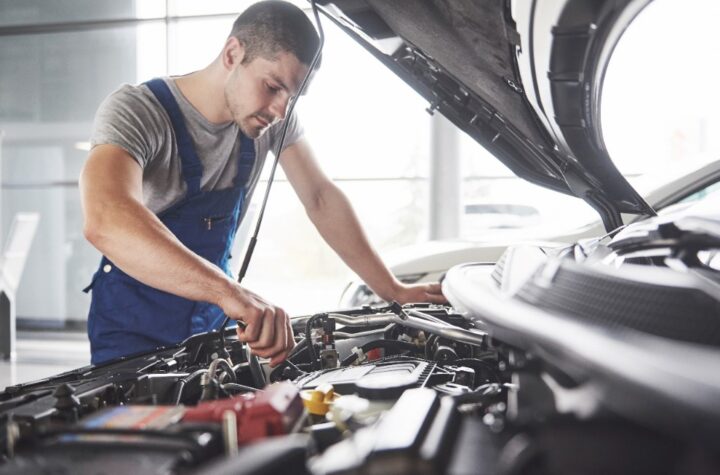
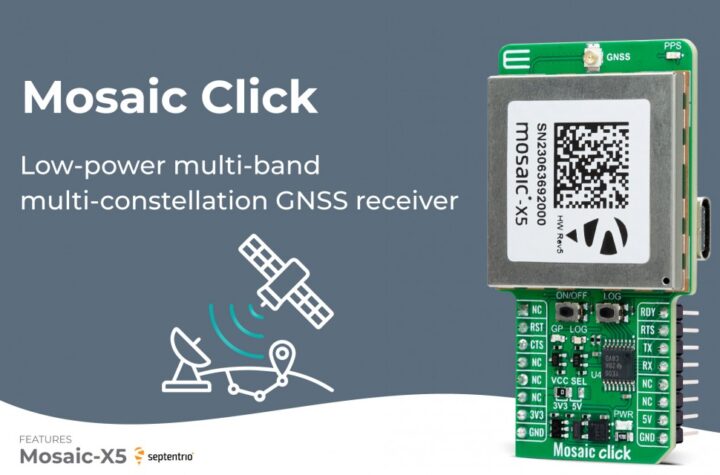
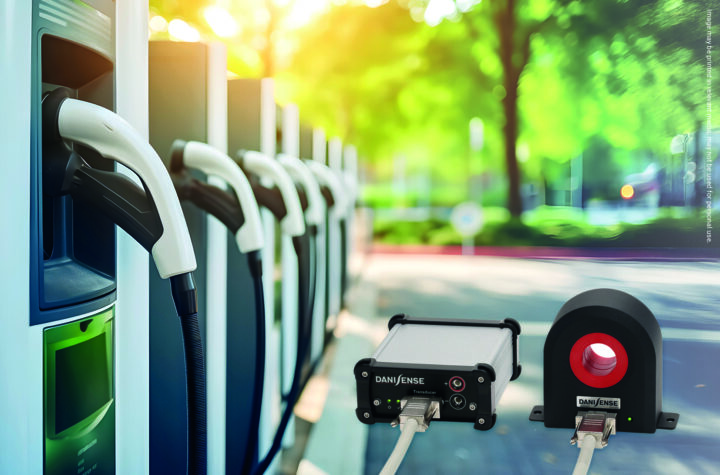
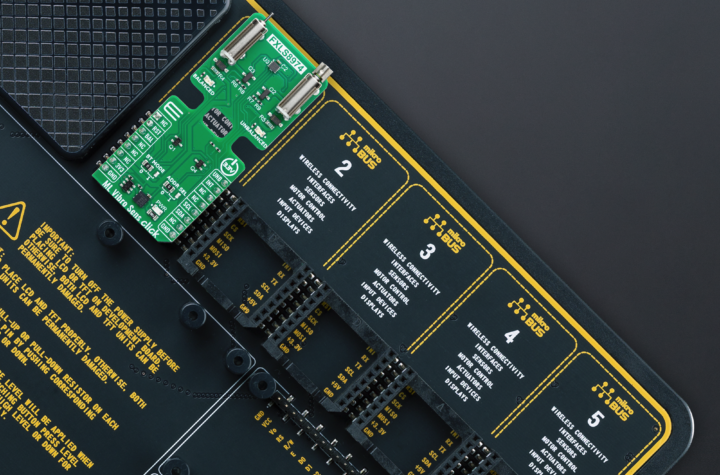
More Stories
Mosaic Click board from MIKROE delivers global coverage multi-band and multi-constellation tracking ability
Current transducer from Danisense selected for DC charging station testing device demonstrator at TU Graz
New Click board from MIKROE helps develop and train ML models for vibration analysis